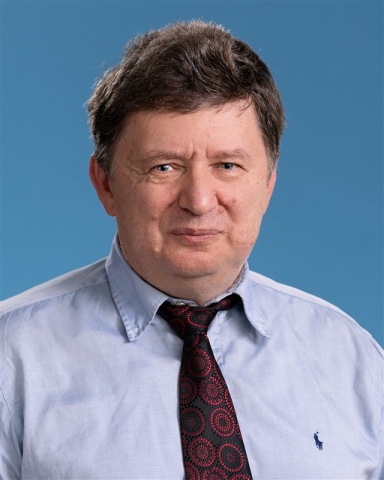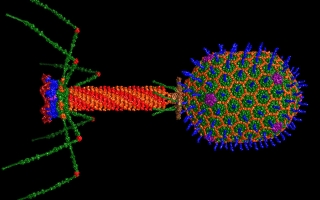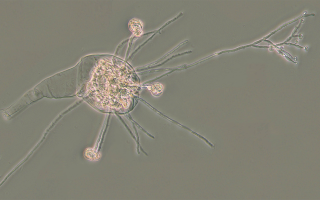Full Name
Irina Arkhipova
Title
Senior Scientist

- Email:
- Phone:
- Fax:
- CV:
File
- ORCID ID:
0000-0002-4805-1339
Ph.D., Molecular Biology, Engelhardt Institute of Molecular Biology, Moscow, 1986.
Dr. Irina Arkhipova is a molecular evolutionary geneticist with a background in biochemistry and molecular biology. Her research deals with mobile DNA in its broader sense, including different types of transposable elements (TEs) that can move within and between genomes, their genomic impact, genetic and epigenetic regulation, evolutionary origins, and the mechanisms underlying their mobility. It is often driven by discoveries that were initially made in bdelloid rotifers, but which are likely to have broader implications for eukaryotes in general. Her current research is focused on horizontally transferred genes, domesticated reverse transcriptases, and intron-containing retroelements. The overarching goal of her research is to obtain an integrated picture of mobile element structure, function and evolution, encompassing the widest spectrum of their interactions with host genomes, from deleterious to neutral to beneficial. She is a leading expert on transposable elements, which she studied since her undergraduate years, and has authored over 70 publications on this topic. She serves as an expert on national and international advisory panels, as an Associate Editor of Molecular Biology and Evolution, and as the Editor-in-Chief of Mobile DNA. She is one of the founding members of the Mobile Genetic Element Cluster at the MBL, and since 2007 has been organizing regional, national and international meetings on mobile genetic elements.

Frangieh C.J., Wilkinson M.E., Strebinger D., Strecker J., Walsh M., Faure G., Yushenova I.A., Macrae R.K., Arkhipova I.R., Zhang F. (2024). Internal initiation of reverse transcription in a Penelope-like retrotransposon. Mob DNA 15:12. https://doi.org/10.1186/s13100-024-00322-z
Nowell R.W, Rodriguez F., Hecox-Lea B.J., Mark Welch D.B., Arkhipova I.R., Barraclough T.G., Wilson C.G. (2024). Bdelloid rotifers deploy horizontally acquired biosynthetic genes against a fungal pathogen. Nat. Commun. https://doi.org/10.1038/s41467-024-49919-1
Arkhipova I.R., Yushenova I.A., Rodriguez F. (2023). Shaping eukaryotic epigenetic systems by horizontal gene transfer. Bioessays 45(7): e2200232. https://doi.org/10.1002/bies.202200232
Arkhipova I.R., Yushenova I.A. (2023). To be mobile or not: The variety of reverse transcriptases and their recruitment by host genomes. Biochemistry (Mosc.), 88(11): 1754-62. https://doi.org/10.1134/S000629792311007X https://rdcu.be/dstfT
Arkhipova I.R., Burns K.H., Chiappinelli K.B., Chuong E.B., Goubert C., Guarné A., Larracuente A.M., Lee E.A., Levin H.L. (2023) Meeting report: Transposable elements at the crossroads of evolution, health and disease 2023. Mob DNA 14:19. https://doi.org/10.1186/s13100-023-00307-4
Rodriguez F., Yushenova I.A., DiCorpo D., Arkhipova I.R. (2022). Bacterial N4-methylcytosine as an epigenetic mark in eukaryotic DNA. Nat. Commun. 13(1), 1072. https://doi.org/10.1038/s41467-022-28471-w
Paul, B.G., Yushenova, I.A., and Arkhipova, I.R. (2022). The Diversity of Reverse Transcriptases. pp.1-28. In: Retrotransposons and Human Disease; A. Gabriel, ed. World Scientific Publishing. Singapore. 260 pp. https://doi.org/10.1142/9789811249228_0001
Rodriguez F., Arkhipova I.R. (2022). An overview of best practices for transposable element identification, classification and annotation in eukaryotic genomes. In: “Transposable Elements: Methods and Protocols”, Branco M., de Mendoza Soler A., eds. Methods Mol. Biol., v. 2607. Springer: Humana New York, NY. https://doi.org/10.1007/978-1-0716-2883-6_1
Craig R.J., Yushenova I.A., Rodriguez F., and Arkhipova I.R. (2021). An ancient clade of Penelope-like retroelements with permuted domains is present in early-branching plants and protists, and dominates many invertebrate genomes. Mol Biol Evol 38(11):5005-5020. https://doi.org/10.1093/molbev/msab225
Nowell R.W., Wilson C.G., Almeida P., Schiffer P.H., Fontaneto D., Becks L., Rodriguez F., Arkhipova I.R., and Barraclough T. (2021). Evolutionary dynamics of transposable elements in bdelloid rotifers. Elife 10:e63194. https://doi.org/10.7554/eLife.63194.
Schön I., Rodriguez F., Dunn M., Martens K., Shribak M., and Arkhipova I.R. (2021). A survey of transposon landscapes in the putative ancient asexual ostracod Darwinula stevensoni. Genes (Basel), 12(3):401. https://doi.org/10.3390/genes12030401
Vakhrusheva O.A., Mnatsakanova E.A., Galimov Y.R., Neretina T.V., Gerasimov E.S., Naumenko S.A., Ozerova S.G., Zalevsky A.O., Yushenova I.A., Rodriguez F., Arkhipova I.R., Penin A.A., Logacheva M.D., Bazykin G.A., and Kondrashov A.S. (2020). Genomic signatures of recombination in a natural population of the bdelloid rotifer Adineta vaga. Nat. Commun. 11(1):6421. https://doi.org/10.1038/s41467-020-19614-y
Arkhipova, I.R., and Yushenova, I.A. (2019). Giant transposons in eukaryotes: is bigger better? Genome Biol. Evol., 11(3), 906-918. https://doi.org/10.1093/gbe/evz041
Yushenova I.A., and Arkhipova I.R. (2018). Biochemical properties of bacterial reverse transcriptase-related (rvt) gene products: multimerization, protein priming, and nucleotide preference. Curr. Genet. 64(6):1287-1301. https://doi.org/10.1007/s00294-018-0844-6
Arkhipova, I.R. (2018). Neutral theory, transposable elements, and eukaryotic genome evolution. Mol. Biol. Evol. 35(6): 1332-1337. https://doi.org/10.1093/molbev/msy083
Arkhipova I.R., Yushenova I.A., and Rodriguez F. (2017). Giant reverse transcriptase-encoding transposable elements at telomeres. Mol. Biol. Evol. 34(9):2245-57. https://doi.org/10.1093/molbev/msx159
Arkhipova, I.R. (2017). Using bioinformatic and phylogenetic approaches to classify transposable elements and understand their complex evolutionary histories. Mob. DNA 8:19. https://doi.org/10.1186/s13100-017-0103-2
Rodriguez F., and Arkhipova I.R. (2016). Multitasking of the piRNA silencing machinery: targeting transposable elements and foreign genes in the bdelloid rotifer Adineta vaga. Genetics 203(1):255-68. https://doi.org/10.1534/genetics.116.186734



